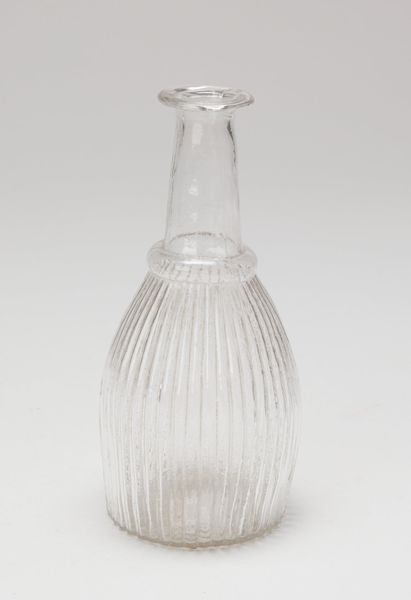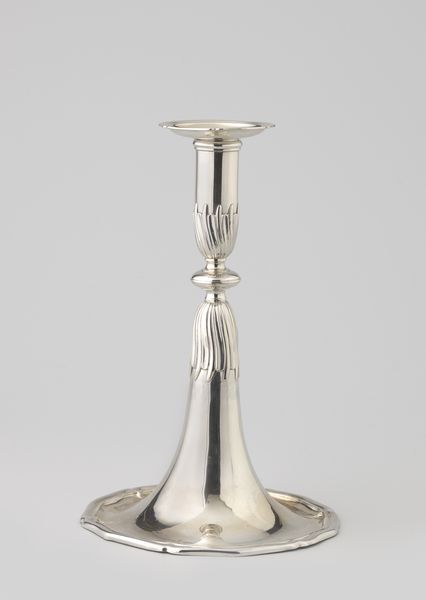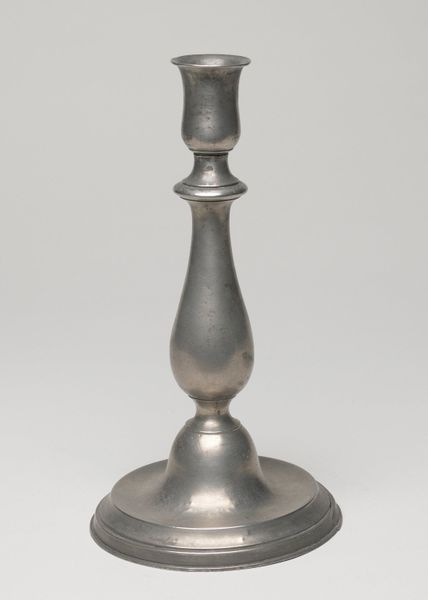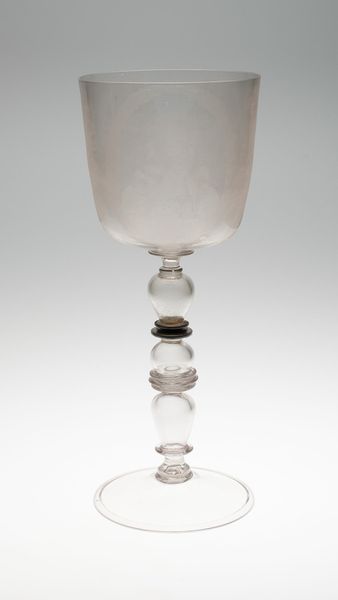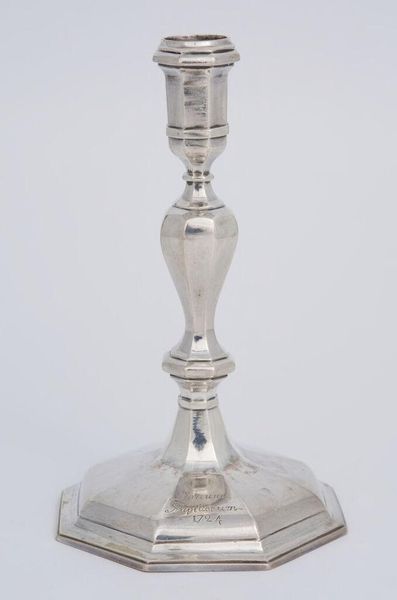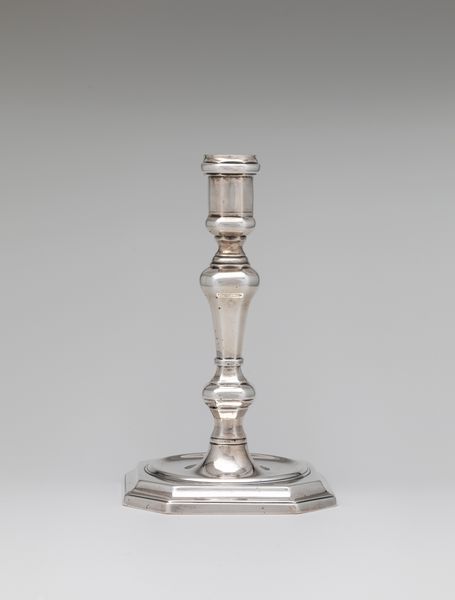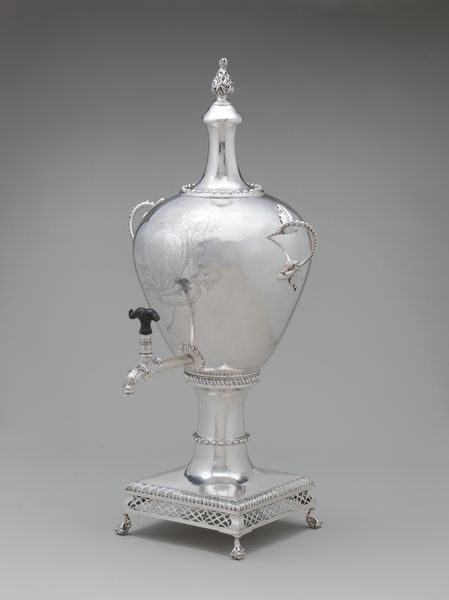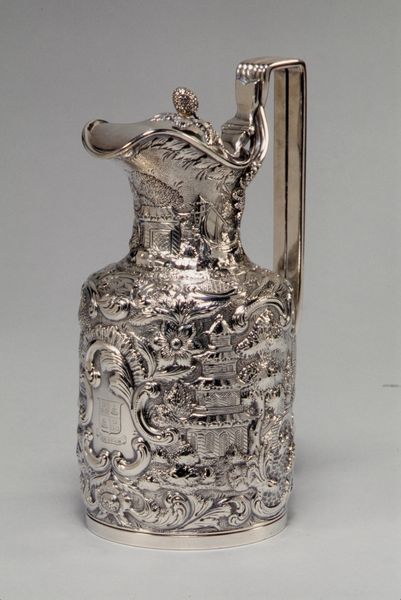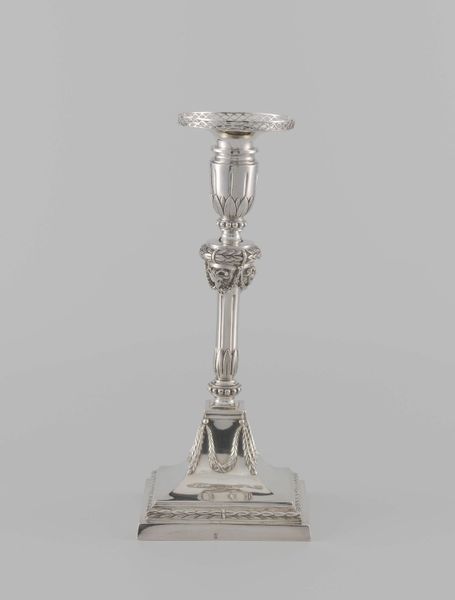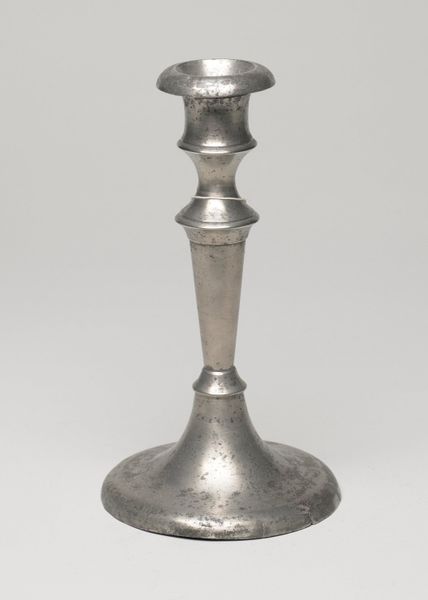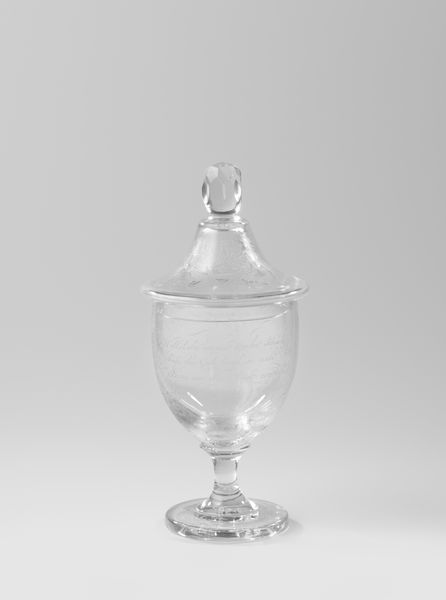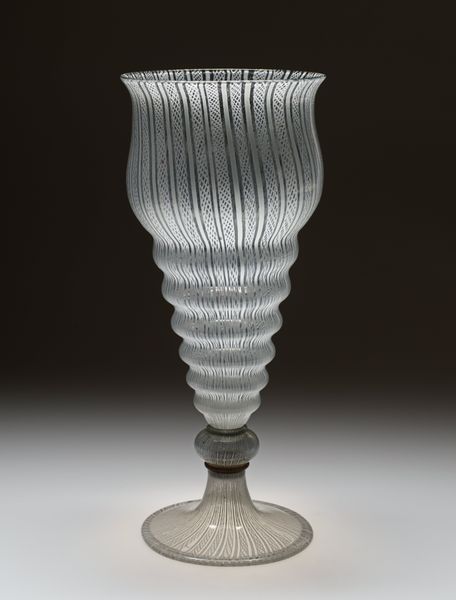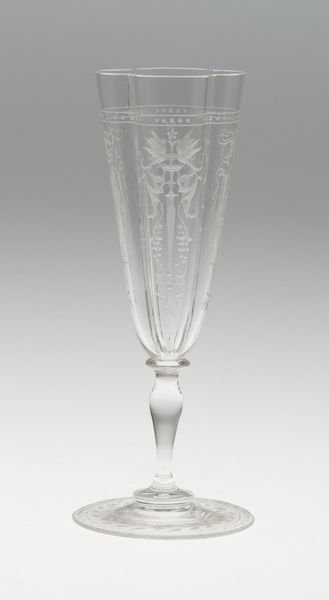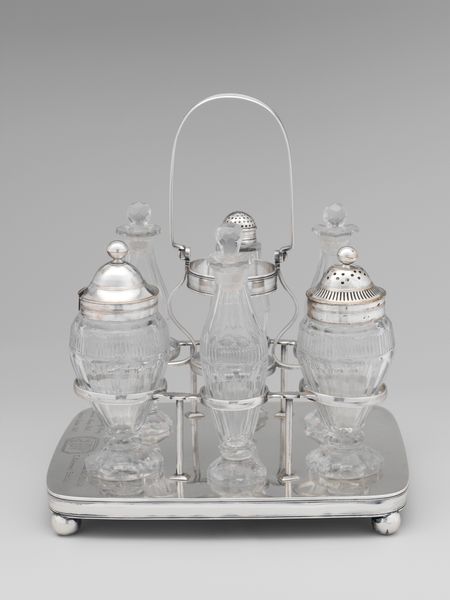
silver, metal, sculpture
#
neoclacissism
#
silver
#
metal
#
england
#
sculpture
Copyright: Public Domain
Editor: Here we have a silver bell, created in 1805 by Solomon Hougham. Its sleek, almost industrial design makes it feel surprisingly modern. What can you tell us about it? Curator: This object prompts us to consider the labor involved. Silver doesn't just appear, perfectly formed. It was mined, processed, and then skillfully manipulated. Given its date, the production of this bell likely involved a hierarchy of labor, from the skilled silversmith to less skilled assistants completing more repetitive tasks. Editor: That's interesting. I was so focused on the bell's clean lines. Do you think its Neoclassical style speaks to that hierarchy in some way? Curator: It does. Neoclassicism in silver objects wasn't just about aesthetic preference; it was a deliberate choice reflecting values of order and reason championed by the elite. Consumption of such items becomes a symbol of social and economic status. Ask yourself, how many working-class families would own something crafted in solid silver at that time? Editor: Not many, I imagine! It's amazing to consider the raw materials, the labor and skill involved. It definitely reframes how I see this piece, as more than just a simple bell. It becomes a reflection of production and class. Curator: Precisely. It challenges us to question the apparent neutrality of Neoclassical design and look beyond the polished surface, considering the socioeconomic forces and production means that underpinned its creation. I also wonder about the sonic experience – the actual sound produced by the metal being another sensorial facet of its existence. Editor: That's a great way to put it all in perspective. Thanks for sharing!
Comments
No comments
Be the first to comment and join the conversation on the ultimate creative platform.
